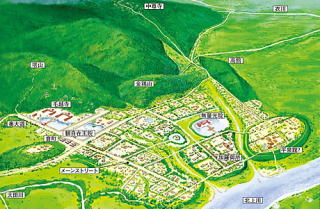
Area Information
½ς@Hiraizumi
* Hiraizumi Culture Heritage [English] [Japanese]
* Guide to Hiraizumi [Korean] [English] [Japanese]@or [English]
Hiraizumi was a political and cultural center in northern Japan under the
administration of the Oshu Fujiwara for nearly one hundred years in the
eleventh and twelfth centuries. Its unique cultural heritage is characterized
by Kyoto-influenced yet idiomatic Buddhist temples, monasteries, and Pure
Land gardens. Hiraizumi's fusion with the natural landscape constitutes
a cultural landscape of unrivaled importance in the world.
(from Hiraizumi Culture Heritage)
Hiraizumi was the central city in the Tohoku region ~1000 years ago. In
northern Japan, the sole local power remaining at the close of the eleventh
century was Fujiwara no Kiyohira. Fujiwara no Kiyohira moved his base of
operations thirty kilometers southwest from contemporary Esashi to Hiraizumi
around the end of the eleventh century. Kiyohira first built a single pagoda
atop the 134-meter hill called Kanzan, located about one kilometer southwest
of the confluence of the Kitakami and Koromogawa Rivers. This single tower
marked Hiraizumi as the center of eastern Japan, and symbolized Kiyohira's
utopian dream....
(from the Hiraizumi web pages above)

ΈΖΰF°@@Chusonji and the Golden Hall
[English]@[Japanese] or [English]
It is recorded that when Kiyohira moved to Hiraizumi around 1100, his first
project was the construction of Chusonji. The Konjikido (the golden hall),
the temple's centerpiece, was completed in 1124. The golden hall is distinguished
by the unparalleled lavishness of its use of gold, silver, and mother-of-pearl
inlay, and by the mummies of the three Oshu Fujiwara lords which lie inside
its three daises.
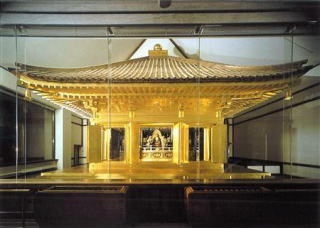
Ρz@Motsuji
[English] [Japanese] or [English]
Motsuji was founded by Ennin (Jikaku Daishi), though most of its structures
were not built until the twelfth century, when the second and third Hiraizumi
Fujiwara lords, Motohira and Hidehira, brought the temple to prominence.
At its peak, Motsuji was a complex of 40 halls and stupas, and 500 monks'
quarters. ....
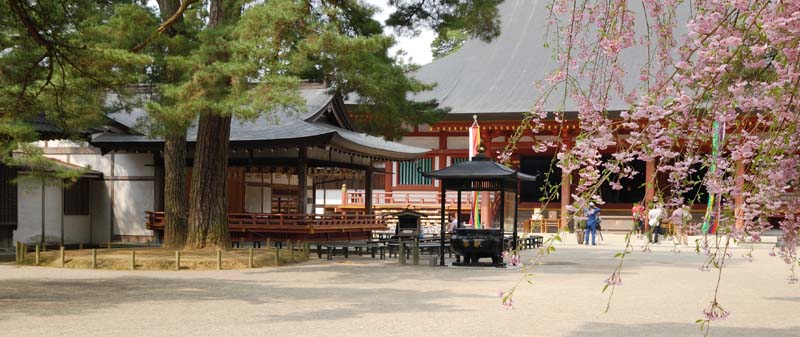
History
Fujiwara Sandai @B‘΄Oγ
The Northern Fujiwara were a Japanese noble family that ruled the Tohoku region (the northeast of Honshu) of Japan from the 12th to the 13th centuries as if it were their own realm. They succeeded the semi-independent Ezo families of the 11th century who were gradually brought down by the Minamoto clan loyal to the Imperial throne based in Kyoto. Ultimately they were conquered by the Kanto samurai clans led by Minamoto no Yoritomo. During the 12th Century, at the zenith of their rule, they attracted a number of artisans from Kyoto and created a capital city, Hiraizumi, in what is now Iwate prefecture. They ruled over an independent region that derived its wealth from gold mining, horse trading and as middlemen in the trade in luxury items from continental Asian states and from the far northern Ezo and Ainu people. They were able to keep their independence vis-a-vis Kyoto by the strength of their warrior bands until they were overwhelmed by Minamoto no Yoritomo in 1189.
The Rise
of Fujiwara no Kiyohira
Fujiwara
no Kiyohira
Fujiwara no Motohira
Fujiwara
no Hidehira
Fujiwara no Yasuhira
Minamoto Yoshitsune and Musashibo Benkei@Ή`oΖ VΩc
Minamoto no Yoshitsune Ή`o
[English] (from Samurai Archive) [Japanese]
Minamoto no Yoshitsune (Ή `o, 1159 ? ) was a general of the Minamoto clan of Japan in the late Heian and early
Kamakura period. Yoshitsune was the ninth son of Minamoto no Yoshitomo.
Yoshitsune's older brother Minamoto no Yoritomo (the third son of Yoshitomo)
founded the Kamakura shogunate. Yoshitsune's name in childhood was Ushiwakamaru.Yoshitsune
was born during the heiji Rebellion of 1159 in which his father and oldest
two brothers were killed. His life was spared and he was put under the
care of Kurama Temple, nestled in the Hiei Mountains near the capital of
Kyoto, while Yoritomo was banished to Izu Province.Eventually, Yoshitsune
was put under the protection of Fujiwara no Hidehira, head of the powerful
regional Northern Fujiwara clan in Hiraizumi.After the Gempei War, Yoshitsune
joined the cloistered Emperor Go-Shirakawa against his brother Yoritomo.
Fleeing to the temporary protection of Fujiwara no Hidehira in Mutsu again,
Yoshitsune was betrayed, defeated at the Battle of Koromo River, and forced
to commit seppuku along with his wife and daughter, by Hidehira's son Fujiwara no Yasuhira.
(from Wikipedia)
Musashibo Benkei VΩc
You know, the name of the Hotel is MUSASHIBO
[English]
Musashibo Benkei (1155 - 1189), popularly called Benkei, was a Japanese warrior monk who served Minamoto no Yoshitsune. He is
commonly depicted as a man of great strength and loyalty, and a popular
subject of Japanese folklore. His life has been embellished and distorted
by kabuki and Noh drama, so that truth cannot be distinguished from legend.
As Yoshitsune retired to the inner keep of the castle of Koromogawa no
tate to commit ritual suicide (seppuku) on his own, Benkei fought on
at the bridge in front of the main gate to protect Yoshitsune. It is said that
the soldiers were afraid to traverse the bridge to confront him, and all that
did met swift death at the hands of the gigantic man. Long after the battle
should have been over, the soldiers noticed that the arrow-riddled,
wound-covered Benkei was standing still. When the soldiers dared to cross the
bridge and look more closely, the giant fell to the ground, having been dead in
a standing position for some time before that. This is known as the "Standing
Death of Benkei"
(from Wikipedia)
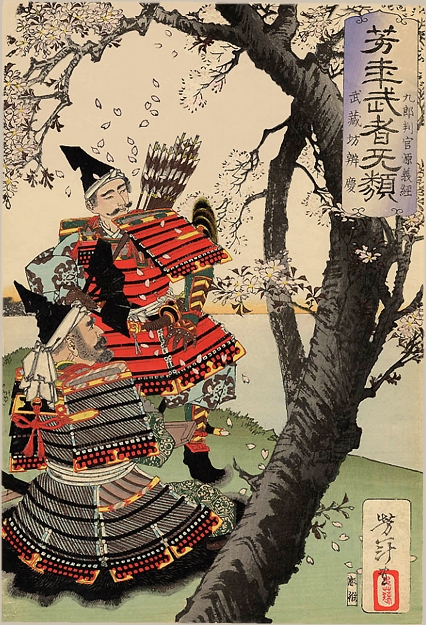
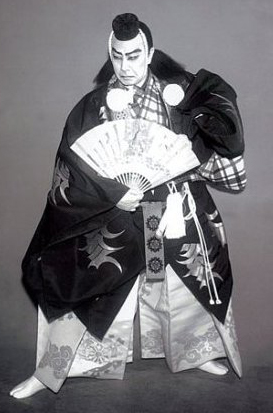
Tohoku Area
Miyagi Prefecture {ι§
* Sendai εδ [Korean] [English] [Japanese]
Tohoku University is located in Sendai.

* Matsushima Ό [Korean] [English] [Japanese]
Matsushima that has been written in Waka(Japanese poetry) since ancient times is
well known as the place to dazzle sophisticated individuals every years to come.
Matsuo Basho, a poet, once wrote in his famous work "The Narrow Road to the Deep
North" extolled Matsushima Bay formed by more than 260 motley kinds of islands
having different shapes and sizes. Matsushima as it has been called one of the
most representative places in Japan that can offer the view with many beautiful
islands truly brings the splendid and exhilarating time with each seasons come.
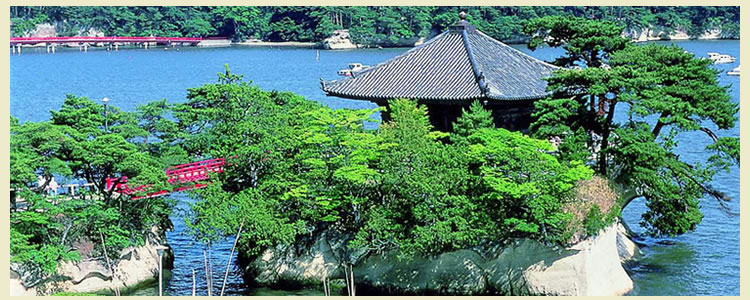
Iwate Prefecture@@βθ§
@Tourism Guide of Iwate [English]@or Iwate Travel Guide [English]
@Iwate Tourism Map [English]
Other Topics
Kenji Miyazawa {ς«‘
Wikipedia [English]
The world of Kenji Miyazawa [English]